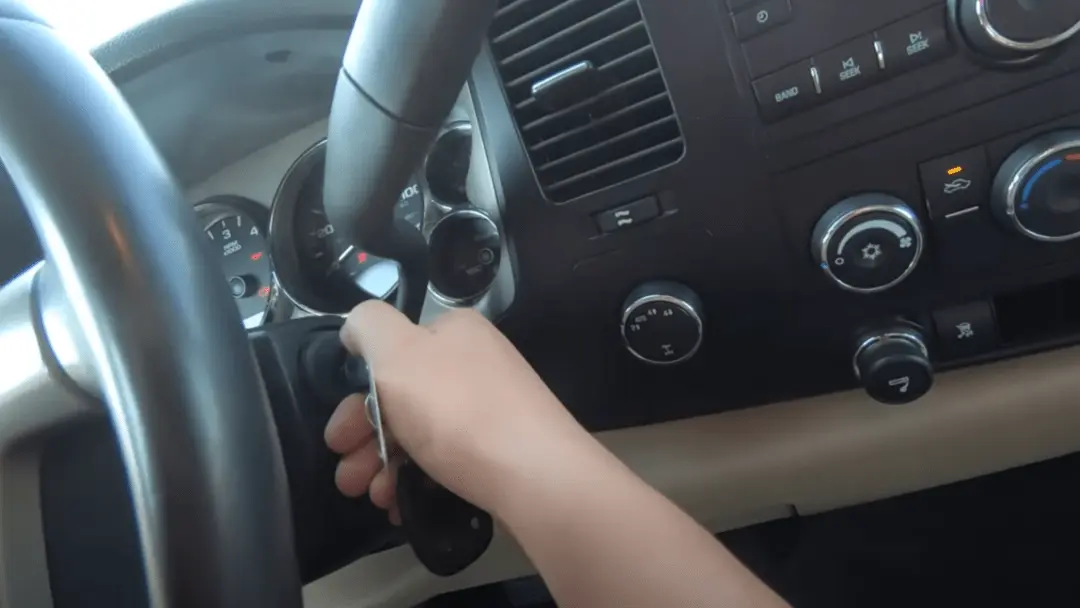Few things can be as disconcerting as your trusty Chevy Silverado suddenly shutting off while you’re cruising down the road. When your vehicle stalls and refuses to start, it’s more than an inconvenience; it’s a cause for concern. But what could be the reasons for Chevy Silverado shuts off while driving and won’t start?
There are various reasons your Chevy Silverado might shut off while driving and refuse to start. Potential culprits include issues with sensors, clogged filters, damaged fuel pumps, problems with the throttle position sensor, ignition system failures, electrical system issues, a malfunctioning alternator, and more.
In this guide, we’ll explore these issues and offer solutions to get your Silverado back on the road.
| Reason | Solution |
|---|---|
| 1. Bad Crankshaft Sensor | – Check for fault codes using a scan tool. – Replace the sensor if needed. – Inspect and repair damaged wiring. |
| 2. Clogged Fuel Filter | – Inspect for blockage, replace if necessary. – Follow maintenance intervals. |
| 3. Damaged Fuel Pump | – Check fuel pressure with a gauge. – Replace pump if pressure is low. – Inspect fuel pump relay and wiring. |
| 4. Air Flow Mass Sensor Failure | – Check for MAF sensor codes with a scan tool. – Clean or replace as necessary. |
| 5. Leaks in Vacuum | – Inspect for visible vacuum leaks. – Repair or replace faulty components. |
| 6. Throttle Position Sensor Issue | – Check for TPS-related codes with a scan tool. – Replace if inaccurate. – Repair wiring and connections. |
| 7. Ignition System Failure | – Inspect coils, spark plugs, and control modules. – Replace faulty components. |
| 8. Damaged Ignition Switch | – Check for damage or wear. – Replace the switch. – Repair wiring and connections. |
| 9. Electrical Problems | – Inspect for wire damage, blown fuses, and faulty connections. – Repair or replace damaged parts. |
| 10. Alternator Failure | – Measure alternator voltage. – Replace if consistently low. – Inspect and replace the alternator belt if needed. |
10 Reasons & Solutions For Chevy Silverado Shuts Off While Driving And Won’t Start
Let’s explore the top 10 potential reasons behind these shutdowns, and here, we will provide you with practical solutions to help you get your Silverado back on the road.
Reason 1: Bad Crankshaft Position Sensor
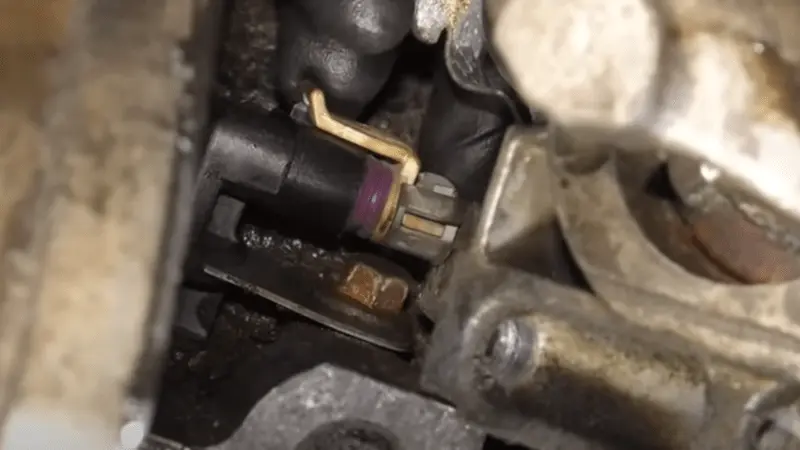
One of the key components that keep your Chevy Silverado running smoothly is the crankshaft position sensor. This sensor is responsible for providing crucial information to the engine control module (ECM) regarding the speed and position of the crankshaft. The ECM relies on this data to precisely time fuel injection and ignition, ensuring proper engine performance. When the crankshaft position sensor is malfunctioning, it can disrupt this delicate balance, leading to unexpected engine shutdowns or stalls during driving.
Solution: To address this issue, start by using a scan tool to check for any fault codes related to the crankshaft position sensor. If a fault code is present, it’s a strong indicator that the sensor is the problem and should be replaced. Additionally, inspect the sensor’s wiring and connections, as wear and tear can affect its performance. If you discover any visible issues, promptly repair or replace the damaged components to ensure a smooth-running engine.
Reason 2: Clogged Fuel Filter

Another potential cause of a Chevy Silverado shutting off while driving and failing to start is a clogged fuel filter. The fuel filter serves as a critical component in preventing harmful contaminants and impurities from entering the engine.
Over time, the fuel filter can become obstructed, diminishing the flow of gasoline to the engine. This reduction in fuel delivery can result in engine stalls or sudden shutdowns.
Solution: To address this issue, start by visually inspecting the fuel filter for any evident signs of blockage or damage. If there are clear indications of blockage, you can attempt to clear it by blowing air through the filter.
However, if the filter is genuinely clogged, the most effective solution is to replace it with a new one. To prevent this problem from recurring in the future, it’s essential to follow regular maintenance schedules and adhere to the recommended intervals for changing the fuel filter. This proactive approach will help maintain a steady and uninterrupted fuel supply to the engine.
Reason 3: Damaged Fuel Pump
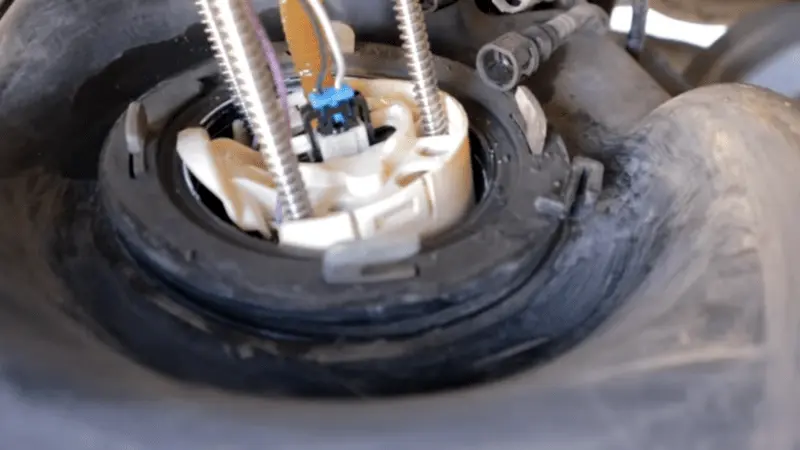
The fuel pump is a vital component in the fuel delivery system of your Chevy Silverado, responsible for transferring gasoline from the fuel tank to the engine. It ensures consistent and adequate fuel pressure, which is essential for the engine’s operation. If the fuel pump is damaged or malfunctioning, it can lead to a sudden loss of power and engine shutdown while driving.
Solution: To diagnose a damaged fuel pump, you can use a fuel pressure gauge to check the fuel pressure. Connect the gauge to the fuel line and compare the reading to the manufacturer’s specifications. If the pressure is significantly lower than it should be, it’s a strong indicator that the fuel pump needs replacement. However, it’s not only the fuel pump that needs attention; ensure the fuel pump relay and wiring are also in good working condition to maintain a reliable fuel supply to the engine.
Reason 4: Air Flow Mass Sensor Failure
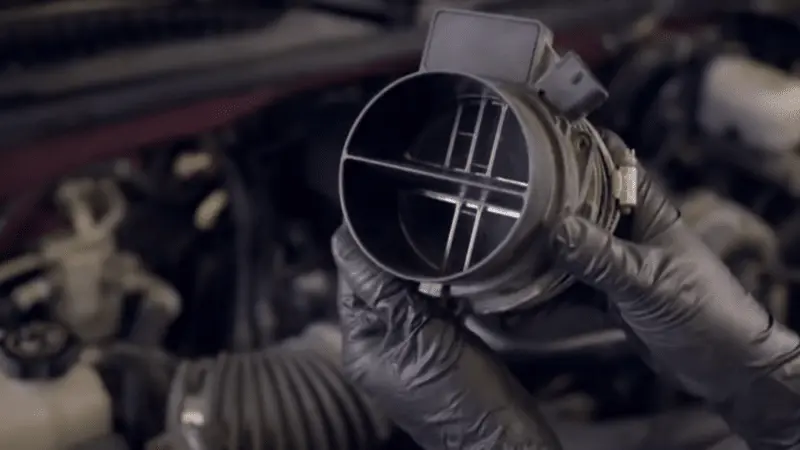
The mass airflow (MAF) sensor plays a crucial role in monitoring the airflow entering the engine and relaying this information to the engine control module (ECM). The ECM uses this data to calculate the ideal air-fuel ratio for the engine’s performance. When the MAF sensor fails, it can result in an overly rich or lean air-fuel mixture, potentially causing the vehicle to stall or shut down unexpectedly.
Solution: Begin by examining the MAF sensor for error codes using a diagnostic scan tool. In some cases, cleaning the MAF sensor with a specialized cleaner may resolve the issue. However, if the problem persists even after attempting to clean and reset the sensor, it may be necessary to replace the MAF sensor with a new one. This step will help ensure the engine receives accurate airflow data, maintaining the proper air-fuel ratio and preventing stalls or sudden shutdowns.
Reason 5: Leaks in Vacuum
A vacuum leak in your Chevy Silverado can lead to engine stalling or shutdown as it disrupts the precise air-to-gasoline ratio required for proper combustion. Potential sources of these leaks include the vacuum hose, the intake manifold gasket, or the throttle body gasket.
Solution: Begin by inspecting the engine for visibly broken or disconnected hoses and any obvious vacuum leaks. To identify concealed air leaks, you can use a vacuum gauge or a smoke test. Once the source of the leak is pinpointed, it can be rectified by repairing or replacing the faulty components and restoring the correct air and fuel mixture for smooth engine operation.
Reason 6: Problem with the Sensor for the Throttle Position
The throttle position sensor (TPS) is responsible for detecting changes in the throttle valve’s opening and closing, providing crucial data to the engine control module (ECM) for fuel and ignition adjustments. A malfunctioning TPS can lead to erratic engine behavior, including stalling and unexpected shutdowns.
Solution: Use a diagnostic scan tool to check for trouble codes related to the TPS. You can also assess the sensor’s accuracy by taking resistance readings and comparing them to the manufacturer’s specifications. If the TPS is damaged or provides inaccurate data, it should be replaced. Additionally, inspect the wiring and connections for visible damage and repair or replace them as necessary to ensure reliable TPS operation.
Reason 7: Failure of the Ignition System
The ignition system is crucial for starting and maintaining engine combustion in an internal combustion engine. Faulty spark plugs, ignition coils, ignition control modules, or other ignition system components can lead to misfires, poor engine performance, or complete engine shutdown.
Solution: Inspect the ignition coils, spark plugs, and ignition control module for visible signs of wear, damage, or malfunction. Use a multimeter to take resistance readings and compare them to the manufacturer’s recommended values for ignition coil resistance. Any defective components should be promptly replaced to ensure the ignition system functions correctly and the engine runs smoothly.
Reason 8: Damaged Ignition Switch
The ignition switch is a critical component responsible for supplying power to your Chevy Silverado’s electrical system, which includes the engine’s ignition system. If the ignition switch is worn out or broken, it can lead to intermittent power loss to the engine, resulting in stalling or engine shutdown while driving.
Solution: Inspect the ignition switch for signs of corrosion, damage, or wear. If the switch is found to be broken or faulty, it must be replaced. Additionally, ensure that any damaged wiring or connections associated with the ignition system are repaired or replaced. A well-functioning ignition switch is essential to maintain a consistent power supply to the engine.
RELATED: Silverado Engine Keeps Running When Ignition Turned Off
Reason 9: Electrical Problems
Issues within the Chevy Silverado’s electrical system, such as frayed wires, faulty connections, or blown fuses, can trigger unexpected engine shutdowns while driving. These problems can impact critical components like the fuel pump, the ignition system, and the engine control module.
Solution: Conduct a thorough inspection of the vehicle’s electrical system, looking for signs of wire fraying, corrosion, or worn-out fuses and connections. Any identified damaged parts should be promptly repaired or replaced. If troubleshooting the electrical system proves challenging or if problems persist, it is advisable to seek assistance from a professional technician to ensure the correct diagnosis and repair.
Reason 10: Alternator Failure
The alternator plays a key role in charging the car’s battery and supplying power to the vehicle’s electrical systems while the engine is running. When the alternator fails, electrical power is lost, which can lead to engine stalling or shutting off unexpectedly.
Solution: Use a multimeter to measure the alternator’s output voltage with the engine running. The voltage should fall within the manufacturer’s recommended range. If the voltage consistently falls below the recommended range, it may be necessary to replace the alternator. Additionally, inspect the alternator belt for adequate tension and signs of wear. If the belt is loose or shows signs of wear, replace it to ensure the alternator functions properly and maintains the electrical system’s power supply.
Tips To Prevent Chevy Silverado From Turning Off While Driving
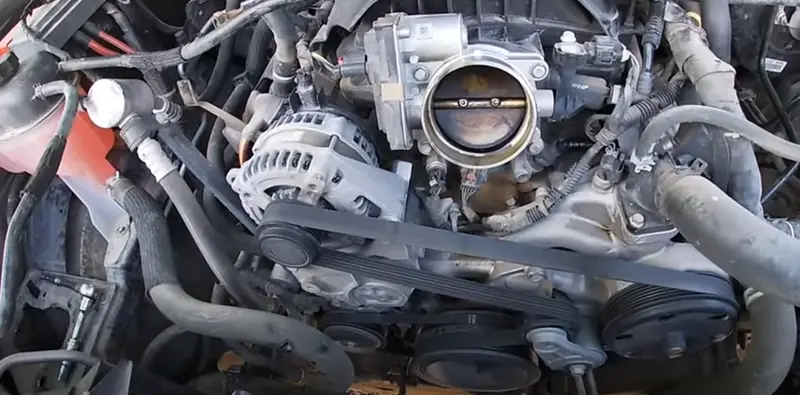
Preventing your Chevy Silverado from unexpectedly turning off while driving is essential for your safety and peace of mind. Here are some valuable tips to help you avoid such frustrating incidents:
- Regular Maintenance: Staying up to date with routine maintenance is one of the most effective ways to prevent unexpected shutdowns. Follow your vehicle’s maintenance schedule, including oil changes, filter replacements, and inspections of critical components.
- Fuel Filter Maintenance: Keep your fuel filter in good condition by adhering to recommended replacement intervals. A clogged fuel filter can disrupt fuel delivery to the engine, causing stalls.
- Fuel Quality: Always use high-quality gasoline from reputable sources. Poor-quality fuel can lead to engine issues and, in turn, unexpected shutdowns.
- Air Filter Care: Replace your air filter as needed. A clean air filter ensures proper airflow to the engine, helping maintain a stable air-fuel mixture.
- Regular Inspections: Routinely inspect your vehicle for visible signs of wear and tear, leaks, or damage. Pay special attention to hoses, wiring, and connections.
- Throttle Position Sensor: Regularly check the throttle position sensor for accuracy and cleanliness. If necessary, clean it or replace it to maintain proper engine performance.
- Ignition System: Inspect the ignition system components, including spark plugs, ignition coils, and control modules. Replace any worn or damaged parts to prevent misfires or engine shutdowns.
- Electrical System Checks: Ensure the electrical system remains in top shape by periodically inspecting wiring, connections, and fuses. Any fraying or corrosion should be addressed promptly.
- Battery Health: A healthy battery is crucial for a stable electrical system. Check your battery’s condition, terminals, and connections regularly.
- Fuel System Inspection: Keep an eye on your vehicle’s fuel system, including fuel lines, the fuel pump, and the fuel tank. Any leaks or damage should be promptly repaired.
- Alternator Testing: Monitor the output voltage of your alternator with a multimeter. Ensure it falls within the manufacturer’s recommended range.
- Emergency Kit: Be prepared for unexpected situations. Keep an emergency kit in your vehicle with items like jumper cables, a flashlight, and basic tools.
- Professional Inspection: If you need more clarification about any aspect of your vehicle’s condition, consult a professional mechanic for a comprehensive inspection and tune-up.
SEE MORE: Chevy Silverado Won’t Start After New Battery
Frequently Asked Questions
Is A Clogged Fuel Filter A Common Reason For My Chevy Silverado Stalling And Not Starting?
Yes, a clogged fuel filter can impede the flow of gasoline to the engine, leading to stalling and starting issues. Regularly replacing the fuel filter according to the manufacturer’s recommendations is crucial to prevent this problem.
How Can I Prevent Issues With The Throttle Position Sensor In My Chevy Silverado?
To prevent problems with the throttle position sensor, ensure you follow a maintenance schedule and periodically check the sensor for accuracy and cleanliness. Clean it or replace it if necessary, and maintain good electrical connections.
What Should I Do If My Chevy Silverado’s Ignition Switch Is Damaged And Causing Shutdowns?
If you suspect the ignition switch is damaged, have it inspected by a professional mechanic. If confirmed, the damaged ignition switch should be replaced, and any related wiring or connections should be repaired.
Can Issues With The Electrical System Cause My Chevy Silverado To Stall While Driving?
Yes, electrical system problems like frayed wires, faulty connections, or blown fuses can lead to engine shutdown. Regularly inspect and maintain the electrical system to prevent such issues. If problems persist, consult a professional.
What Is The Role Of The Alternator In Preventing Engine Shutdown In A Chevy Silverado?
The alternator is responsible for charging the battery and powering the vehicle’s electrical systems while the engine is running. Regularly check the alternator’s output voltage to ensure it falls within the manufacturer’s recommended range. Replace the alternator if voltage constantly drops below this range to prevent engine shutdowns.
Final Discussion
In the face of a Chevy Silverado suddenly shutting off while driving, knowledge is your best companion. This blog post has taken you on a journey through the potential reasons behind this unnerving experience, offering you insights into what might be causing your vehicle to stall. More importantly, it has provided you with practical solutions to get your Chevy Silverado back on the road with confidence.
By maintaining a rigorous maintenance schedule and attending to issues with sensors, filters, the ignition system, and the electrical system, you can greatly reduce the risk of encountering these disruptive shutdowns.

Eric L. Friedman is a car expert who has worked on Chevy and GMC trucks for over 10 years. He started AutoYolo to help people fix their own cars. On the blog, he shares easy tips, step-by-step guides, and repair advice to make car problems less stressful and more affordable.

